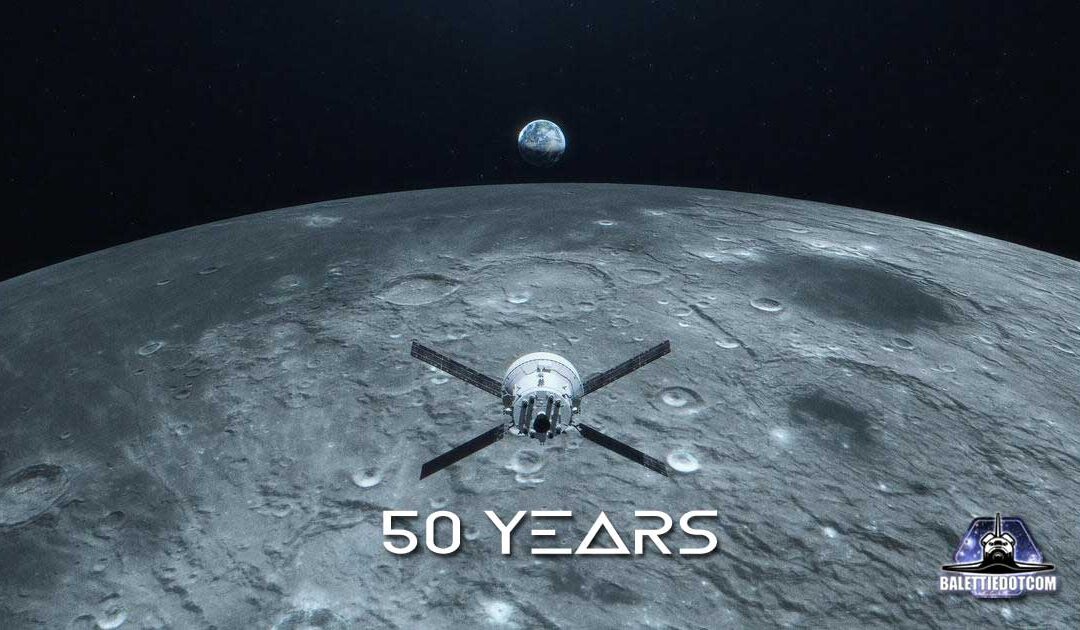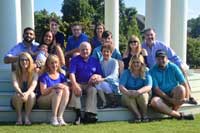The Artemis I mission occurred 50 years after Apollo 17. What will it take to not have this happen again?


The Artemis I mission occurred 50 years after Apollo 17. What will it take to not have this happen again?

Another round of travel journals for a visit to the beautiful Cotswold region of England.

Santa Claus. Father Christmas. Kris Kringle. St. Nicholas. Papa Noel. Me.

“13 Minutes to the Moon” – an excellent BBC podcast focusing on the behind-the-scenes heroes of Apollo 11 and Apollo 13.






The space exploration advocacy website of Roger Balettie, former Flight Dynamics Officer in NASA’s Space Shuttle Mission Control Center.
Select a menu tab to the left for detailed links or one of the main sections below:
The Flight Dynamics Officer (FDO, pronounced “fido”) is a Flight Controller in the Mission Control Center responsible for the overall trajectory, or flight path, of the Space Shuttle and all related payloads or other space-bound vehicles associated with the Shuttle.
"Houston… Tranquility Base here. The Eagle has landed."
Since 1965, the Mission Control Center (MCC) has been the nerve center for America’s manned space program.
Space- and NASA-based blog entries.

The Artemis I mission occurred 50 years after Apollo 17. What will it take to not have this happen again?

“13 Minutes to the Moon” – an excellent BBC podcast focusing on the behind-the-scenes heroes of Apollo 11 and Apollo 13.

It’s been 40 years since the launch of STS-1, and the excitement of that day never faded.
During the Space Shuttle Program, the Flight Dynamics Officer was responsible for the selection of Shuttle Landing sites for a variety of scenarios including nominal End-of-Mission (EOM), various Ascent Abort scenarios (Trans-Atlantic Abort Landing – TAL and Abort-Once-Around – AOA), and other potential emergency landing scenarios.
In coordination with the Landing Support Officer (LSO), worldwide runway complexes, that met basic requirements of runway length and navigational aids, were compiled into a list of potential Shuttle landing sites. Current mission requirements, Shuttle trajectories, and weather reports from around the world were combined to select the best landing opportunity in real-time. These landing sites were loaded into the FDO’s Deorbit Opportunities Processor (DOPS), which provided an at-a-glance view of upcoming landing opportunities.
The (admittedly rough by today’s standards) map graphics you see below were generated by the LSOs during the mid-1990s using the technology at hand. Obviously, more modern mapping capabilities would make these look so much better, but -THE TRENCH- will continue to provide these maps as an archive of how it was done in the Mission Control Center during the Space Shuttle Program of the 1980s and 1990s.
In this graphic, all world-wide designated Space Shuttle Landing Sites are identified. The sites in the two blue boxes are defined in the other two images below.
The three PLS sites were EDW – Edwards Air Force Base, NOR – Northrup, White Sands Space Harbor, and KSC – Kennedy Space Center.
ELS sites ranged from those also used for Trans-Atlantic Abort Landing (TAL) sites as well as true “Emergency” sites (Hao Atoll and Easter Island in the South Pacific). Hao and Easter Island had originally intended as “TAL” sites for launches planned from Vandenberg.
In this graphic, sites in the Eastern Continental United States (CONUS) are displayed.
Kennedy (KSC) was, of course, the launch facility, but was also the Return-to-Launch-Site (RTLS) abort landing site. RTLS was a very dangerous, and thankfully never executed, abort scenario. It was simulated many many times, however, and had the crew and the MCC needed to perform it, they were ready.
Sites up the East Coast were all on high-alert during a launch that might have needed them at a moment’s notice.
In this final graphic, sites in Europe and Northern Africa are displayed.
The selection of the sites were specific to the launch inclination. More easterly launches (28.5 degree inclination) would have resulted in lower latitude potential abort landings, while the Mir/ISS launches (51.6 degree inclination) and higher would have engaged more of the northern/European sites.
Post-launch, these sites were also kept on hold for potential ELS opportunities.
Cool!
Hey! This is really great. I found your site from a link on simpleflying.com. Thanks for this info.
When I was stationed at Kadena Air Base Okinawa from 79 to 81 we were designated as a abort destination .
I worked in Central Security Control and we had charts and maps on the wall to advise Security where the shuttle would be parked, perimeter control and access etc.
Hi Chris! Thanks for adding that cool bit of Shuttle history… and yes, there were a number of 12Kft runways around the world that could have been used for those contingency landings.
The sites that I have listed on this page were ones that were actively supported during certain mission timeframes with dedicated personnel. Not every one of the 12Kft runways around the world met that criteria, although we certainly *would* have used (for instance) Kadena if it were our best option – even if we didn’t have real-time personnel there to meet the Orbiter!
I know that at the two trans-Atlantic abort sites for a particular mission there were personnel on standby during launch. I assume that these were local airport workers who were being paid by NASA for this? Or maybe there was also at least one NASA employee stationed there during the launch. Were people on standby at all of the east coast launch abort sites? As for emergency landings from space, since a particular site could be called up anytime during the mission, I would guess that no one was necessarily there on standby during the entire mission dedicated to Shuttle, but that instead all of the controllers and security personnel had been briefed or received training so that whoever happened to be working when the emergency occurred would be able to handle it. That’s my guess anyway. Thanks for any insight on this.
Hi Steve! There were actually several TAL abort sites that could be used, depending on the inclination of the mission. You’re correct, though, that some locals were paid for support, but the primary TAL support were NASA (or DoD) personnel specifically sortied to those sites pre-launch to verify all of the NAVAIDS were working and then to support the actual mission. There would be times where the *specific* TAL site wouldn’t be selected until the final weather forecast briefing, so there were NASA/DoD personnel at multiple sites! For “emergency landings”, a lot of these were “best available support”, but the primary CONUS site (EDW, KSC, or NOR) for specific orbits each day were fully staffed and ready. There were also times where certain worldwide landing sites could be identified as possible options, based on the orbital groundtrack, so in those cases – they had knowledge of a possible timespan in which (if it were to happen) they might have been needed to support. The FDO would coordinate with the Landing Support Officer (DoD early on, but transitioned to NASA personnel who worked directly with DoD and State assets worldwide for coordination) to make sure they always had the latest deorbit opportunities timeline. You can see an example of one of the CONUS Deorbit Opportunities Table on the Entry FDO displays page. But again, yes – anyone who was at a potential emergency landing site (CONUS, TAL, or otherwise) that would have needed to support a Shuttle landing would have received both extensive initial and subsequent refresher training!
Hi I was told that filton air field in Bristol was the back up to RAF Fairfield if the shuttle over shot it’s mark
Hi Joe! RAF Filton, being only 8Kft in length, would never have been a *planned* Shuttle runway. We never planned on anything less than 12Kft as a rule, with Fairford being one of the exceptions (10Kft) because of lack of options. However, if it were a “really bad day” and the energy situation (velocity and altitude, including rates) were so low as to not have any options, it would be any visual option available.
Filton was never a TAL nor abort site. Fairford (FFD on the MOCR map) was routinely put on alert for a launch, even one time during when the Air Tattoo was on the base. A friend who works on the fire team said they were routinely tested on requirements, should they ever be required.
I’m an Air Traffic Controller at Shannon ACC (en route control centre just down the road from Shannon Airport). In the Boardroom at work we have an Irish flag which flew in space aboard Discovery in 2008, presented by NASA as thanks for the unit’s support of the Shuttle program[me]
Hi Neil – that’s a fantastic memento and deserved recognition. Thank you for your and your unit’s support. The Shuttle Program was truly a worldwide team effort!
Comment *Hi Roger. I would very much like to clear something up. There has been a myth for many years here in Zimbabwe that Hwange National Park Airport (HWN)was an emergency landing site for the shuttle. The runway is 15,092 feet and asphalt. Could this have been true as I see that Hoedspruit is listed as one of the African runways? Thank you
Hi James – there are distinctions in Space Shuttle ELS designations that are in play here. While yes – HWN is certainly long enough to support the landing and rollout requirements, there would not have been the Tactical Air Navigation / Navigation Aids (TACAN/NAVAIDS) required to support a safe/planned landing there. HWN isn’t in the Flight Data File (FDF) “Flight Maps and Charts” that I have (vintage 1991), so it would have had to have been a “Very Bad Day ™” to not be able to use one of the more equipped facilities (listed in the FDF) within a possible entry groundtrack. A proper ELS designation required not only the physical dimensions to support but also some of the basic navigation aids and agreements via State Department/DoD channels. I don’t believe HWN ever was in that list.